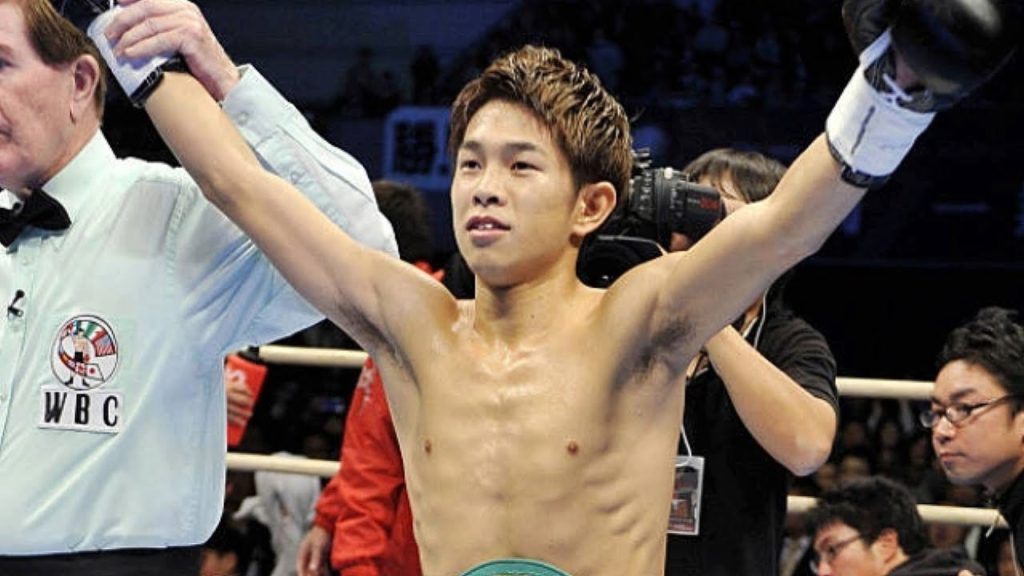July 20: Junto Nakatani-Vincent Astrolabio Bantamweight Battle Headlines World Title Tripleheader at Tokyo’s Ryogoku Kokugikan LIVE on ESPN+
TOKYO (May 31, 2024) — WBC bantamweight world champion, three-weight king, and rising pound-for-pound superstar Junto Nakatani will defend his strap against Filipino contender Vincent Astrolabio on Saturday, July 20, at Ryogoku Kokugikan in Tokyo.
Nakatani-Astrolabio tops a world title tripleheader that also includes WBO junior bantamweight world champion Kosei Tanaka against Jonathan “Titan” Rodriguez and the vacant WBO flyweight world title showdown between Riku Kano and Los Angeles native Anthony Olascuaga.
Additionally, the card features former kickboxing world champion Tenshin Nasukawa, who will take on Jonathan “Torres” Rodriguez in a 10-round bantamweight special feature.
The three world title fights and Nasukawa-Rodriguez will stream live and exclusively on ESPN+ in the early morning hours in the U.S.
Junto Nakatani vs. Vincent Astrolabio
Nakatani (27-0, 20 KOs) is a former flyweight and junior bantamweight world champion who is 6-0 with five knockouts in title fights. He won the vacant WBO junior bantamweight crown in May 2023 with a brutal 12th-round knockout over Andrew Moloney in Las Vegas. Less than four months later, he defended the belt with a one-sided decision over Argi Cortes. He moved up three pounds in February and dethroned WBC bantamweight world champion Alexandro Santiago via sixth-round TKO. Astrolabio (19-4, 14 KOs) is making his second bid for a world title following a May 2023 majority decision defeat to Jason Moloney for the vacant WBO bantamweight strap.
Kosei Tanaka vs. Jonathan “Titan” Rodriguez
Tanaka (20-1, 11 KOs), who has held world titles in every weight class from 105 to 115 pounds, became Japan’s third-ever four-division world champion when he won a unanimous decision over Christian Bacasegua for the WBO junior bantamweight title in February. Tanaka has won five fights since the lone loss on his ledger, an eighth-round TKO to fellow Japanese four-division king Kazuto Ioka. Rodriguez (25-2-1, 17 KOs), from San Luis Potosi, Mexico, is 3-0-1 since falling short to Jerwin Ancajas in an April 2021 bid for the IBF junior bantamweight crown.
Riku Kano vs. Anthony Olascuaga
Kano (22-4-2, 11 KOs) is unbeaten in five fights since moving up to flyweight in 2022. He went 3-0 in 2023, including a second-round stoppage over then-unbeaten Khomsan Kaewruean. The 26-year-old is making his second attempt at a world title, as he lost a technical decision to Katsunari Takayama in 2016 for the WBO minimumweight title. Olascuaga (6-1, 4 KOs) is a former amateur standout who challenged Kenshiro Teraji for the unified light flyweight title in April 2023. He rebounded from that brutal setback — a ninth-round TKO — with a seventh-round stoppage over Giemel Magramo five months later.
Tenshin Nasukawa vs. Jonathan “Torres” Rodriguez
Nasukawa (3-0, 1 KO) made his pro boxing debut in 2023 following a decorated 44-0 kickboxing record that included multiple word titles. One of Japan’s most famous athletes, he is already world-ranked at bantamweight. Nasukawa made his 2024 debut in January with a third-round TKO over Luis Robles Pacheco. Rodriguez (17-2-1, 7 KOs), from Río Piedras, Puerto Rico, is best known for his 2023 first-round knockout of former world champion Kal Yafai. He is coming off February’s seesaw battle against Antonio Vargas, which he lost by seventh-round TKO.
